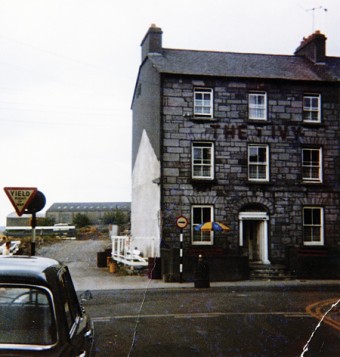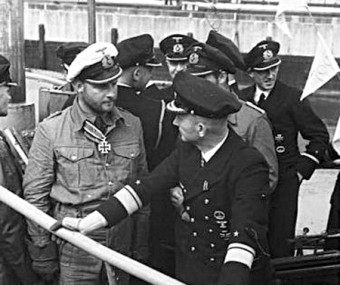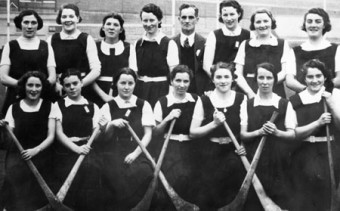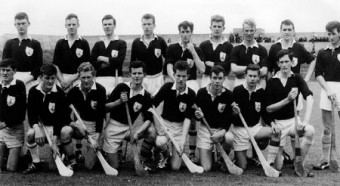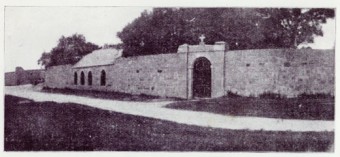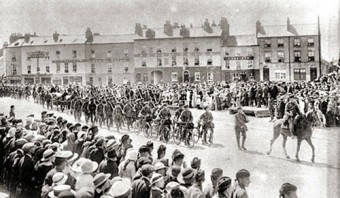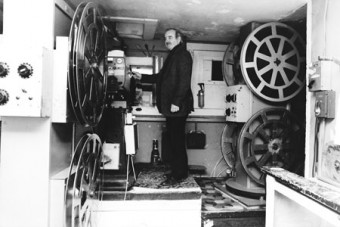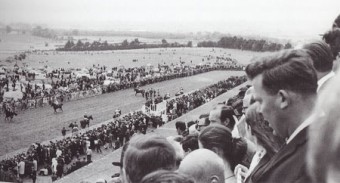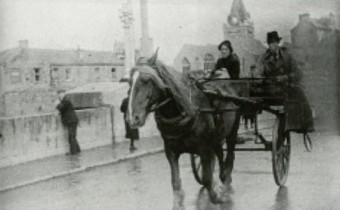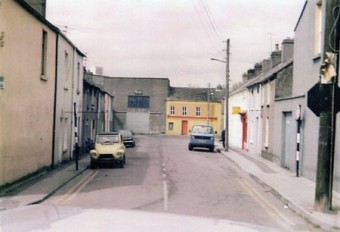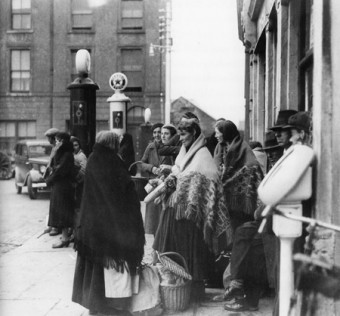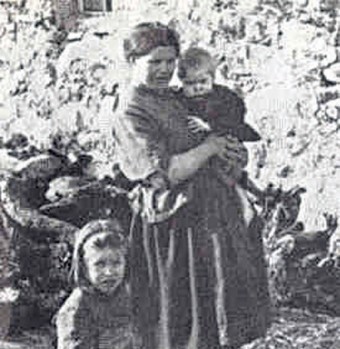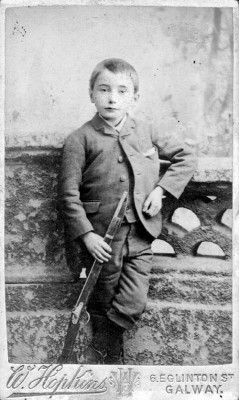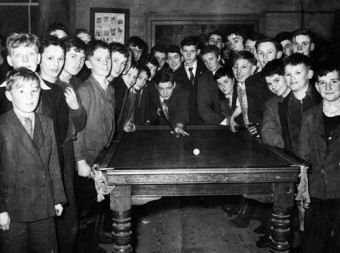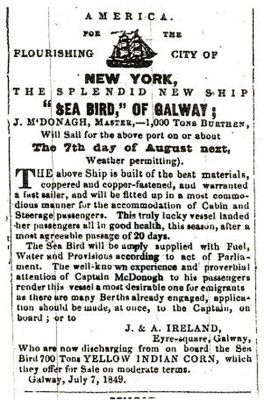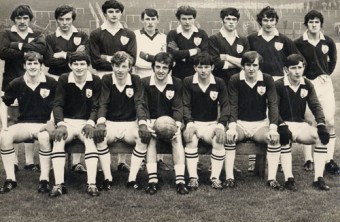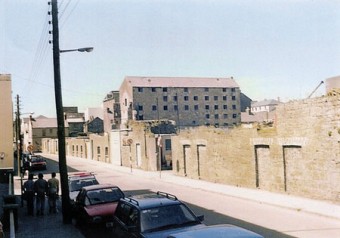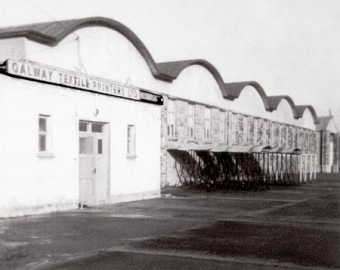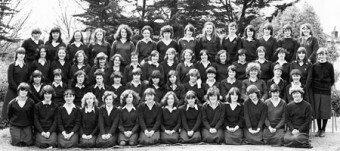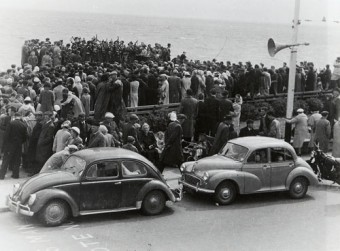The Ivy Hotel
Thu, Sep 15, 2011
The Ivy Hotel in Eyre Street was known as Baker’s Hotel during the Black and Tan era. Captain Baker, who had served in the war, lived there with his daughters. A number of Black and Tans, including the infamous Krumm, lived there, and others frequented the hotel. The girls were friendly with the Tans and the local IRA took a poor view of this.
Read more ...The man who sank the SS Athenia
Thu, Sep 15, 2011
While Galway was caring for some of the survivors of the SS Athenia, torpedoed off the Donegal coast on September 3 1939, America, Britain and Canada unleashed a vitriolic attack on Germany for sinking a passenger ship. Included among her 1,418 passengers and crew were more than 300 Americans. A total of 117 people were killed, some unfortunately as they were being lifted from the sea by the rescue boats including the Knute Nelson (which had brought 430 survivors into Galway), and three British warships, the HMS Electra, HMS Fame and the HMS Escort, which had rushed to the scene. Among the dead were 28 American citizens.
Read more ...Galway camogie
Thu, Sep 08, 2011
Experimental rules for a female stick-and-ball game were drawn up in 1903, and the first public game took place in July of that year, and so the game of camogie was officially launched. Men used to play with a ‘camán’, but the women would use a shorter stick described in the diminutive form ‘camóg’. So the game was called ‘camógaíocht’ and this was anglicised to camogie. The pitches used were shorter than standard, the game lasted 50 minutes and teams were 12-a-side, using an elliptical formation of 1-3-3-3-1. In 1999 camogie moved to the normal GAA field size, teams were 15-a-side and they adopted the standard GAA butterfly formation of 3-3-2-3-3.
Read more ...Galway minor hurlers, 1965
Thu, Sep 01, 2011
Hurling is more than just a game, it is the most Irish thing we have apart from our language, a national passion which is woven deeply into the social fabric of Irish society, an icon of Irish culture, a game that is played for pride, not money.
Read more ...The Augustinians and Forthill
Thu, Aug 25, 2011
The Augustinians have been associated with Galway since the year 1500. Their first convent, or priory, was built on Fort Hill between 1506 and 1508. Its patroness was Margaret Athy who was the wife of the then mayor, Stephen Lynch. He sailed for Spain in search of a cargo of rich wines, and when he returned, he was astonished to see the graceful outline of a new church, with tower and tapering spire, on the elevated promontory that was Fort Hill. Not one stone of it had been laid when he left the city.
Read more ...Galway’s military museum
Thu, Aug 18, 2011
Our photograph today was taken in Eyre Square in 1922, and shows the Connaught Rangers parading through the city on their last day in Galway. It is interesting to see them on horseback, on foot, and with bicycles. As you can see in the foreground, there is a long line of soldiers standing in front of the crowd, and there is what looks like a temporary reviewing stand on the far side of the street.
Read more ...One hundred years of cinema in Galway
Thu, Aug 04, 2011
The earliest reference to ‘moving pictures’ in Galway that I have come across dates from 1909, when The Enterprise Animated Picture Company came to the Court Theatre in Middle Street with its cinematography performances and variety entertainments. “Rarely has such an opportunity been given to the people of Galway of viewing in animated pictures the most sensational events of real life and drama. Those from real life included Boxing Champions and Logging in Sweden, while other titles included Nocturnal Thieves, A Constable Please, The Pony Express, and Fairy Presents. The pictures come in ever-changing variety and there are no exasperating delays.” The Court Theatre had 500 seats and was also known as The Racquet Court.
Read more ...The huckster’s harvest
Thu, Jul 28, 2011
“The Galway Races are unique in Irish sport. For this is a real Connaught holiday. Caravans and their picturesque owners are making their trek weeks ahead. Urgent farm work is abandoned for an hour. Business and professional men; regular race-goers, hunting folk, farmers of all ranges of acreage, holiday trippers from the eastern cities; Connemara and Aran Island men and maids who speak English only, are here in colourful buoyant groups. All the fun of the fair; huge fields of beautiful horses; thrilling finishes and good priced winners — all lend glamour and life to this great outdoor festival of the west.
Read more ...Postin’, the Races, and the famous Cannon Ball
Thu, Jul 28, 2011
I have often heard my grandmother say that the fun of Galway races began when you were hauled up onto a sidecar, behind a lively pony, and driven at a smart pace to Ballybrit. Passengers held on tightly to each other, or to the wooden seat, as the smell of horse, and the jolting ride over rough roads gave it a carnival atmosphere. The races were a two-day meeting then yet the jarvies, or ponymen, would hang about the town for the week hoping to get a fare. As well as bringing racegoers to Ballybrit in the mornings, and home in the evenings, they also brought them to Salthill. Sometimes they carried them to the dogtrack at College Road. Either way it was a long and busy week for the ponymen who came mainly from the Moycullen area, renowned for its Connemara ponies, and passionate owners.
Read more ...Bowling Green of yesteryear
Thu, Jul 14, 2011
In 1883, a sub-committee of the town commissioners reported on the sanitary conditions of the houses in this area. Some were occupied in tenements, others were held by single families. “In none of these houses is there any provision as to water closets, privies or drains which in itself is deplorable; but your committee feel it would be but ill discharging their duty if they stopped short at such an exposition and remain silent as to the absence of every feature which would recommend them as habitations for human beings. The poor can only hope for impoverished dwellings, but when a gentleman enters into commercial relations with them, and on a well intended profitable scale to himself .... he should not be exempted from the obligation of providing them with accommodation somewhat better than Indian wigwams.”
Read more ...Changing fashions, Eyre Square
Thu, Jul 07, 2011
There is a wonderful mix of the modern and the traditional in this photograph which was taken at the corner of Eyre Square and Rosemary Avenue in the mid 1930s. The woman in the foreground is wearing a plain black shawl, a petticoat and a ‘práiscín’ which was a heavy canvas apron worn to protect the skirt. Two others are wearing beautifully patterned shawls which must have looked very elegant and colourful. They had probably come into town to sell their wares, and then went shopping with the proceeds, and their baskets are now full. The other women in the picture are all dressed in more ‘up to date’ coats and berets. It looks as if all of these people are waiting for a bus.
Read more ...Attempts made in 1847 to establish fishing industry in the west
Thu, Jul 07, 2011
The tragedy of the Great Famine was compounded by the fact that our seas were full of fish, yet the lack of a sustainable fishing industry, and a general dislike of fish among the peasantry, left untouched this abundant food source. As the appalling statistics of hunger, riots, death, fever and evictions began to penetrate the British government, some action was at last taken*. Unsuitable as it was for Irish palates, vast quantities of American maize was imported, and distributed. Public relief schemes, such as canal-building and new roads were introduced to provide some employment, and efforts were made to establish a fishing industry.
Read more ...Pádraic Ó Conaire, prince of storytellers
Thu, Jun 30, 2011
“A short walk on the gravelled path and I was before the man I had come to see. There was a great peace about him as he sat there, leg crossed upon leg, hat rakish on his head, mute in the sculptured dignity of stone. Ever since I had learned the Gaelic, I had loved him, this strange man of dreams whose friends were the birds and the furry people of the wood, the wind and the small white stars.
Read more ...Our Lady’s Boys’ Club, a Galway gem
Thu, Jun 23, 2011
This photo of a happy group of Boys Club lads was taken in the mid fifties and includes Paddy O’Connell, Dominick Curran, Seanie Flaherty, Joe Walsh, --- Harty, Tommy Gannon, Dessy Fitzpatrick, Michael Burke, Tom Cunningham, Bartley Hynes, Tony Conboy (taking the shot), Sean McNamara, Gerry Ryan, Willie Golding, Colie Rushe, William McDonagh, Peter Folan, Leo Creane, Francis Walsh, Danny Collins, Jackie Molloy, Dominick Geary, and Paddy McDonagh.
Read more ...The Great Famine in Galway
Thu, Jun 16, 2011
Like most towns in Ireland, Galway was used to food shortages; they had occurred here in 1816, 1817, 1822, 1831, and in 1842 there were food riots in the city. Nobody, however, was prepared for what happened in 1845 when the potato crop failed. As winter approached, the situation did not seem any worse than usual, though people were concerned about food being exported from the docks while there was a shortage locally.
Read more ...Galway minors, All Ireland champions 1970
Thu, Jun 09, 2011
Now that Alan Mulholland’s under-21 team have kickstarted the Galway GAA season in such spectacular fashion, we thought to show you some champions of yesteryear, the county minor team who won the All Ireland in 1970.
Read more ...Merchants Road, after the fire
Thu, May 26, 2011
This photograph was taken in the late seventies, and shows how quickly streetscapes can change. Merchants Road was originally known as ‘Back Street’ because it was at the back of (outside) the old city walls. As the docks were developed, a lot of warehousing and industrial buildings were constructed around the area to facilitate companies who were importing and exporting from the port, and so Merchants Road came into being. It was a drab street, quite a bit of the area we see in the foreground was warehousing, like the tall building we see in the centre of our picture.
Read more ...Galway Textile Printers
Thu, May 12, 2011
Our photograph today, which is courtesy of Pat McPhilbin from Emmett Avenue in Mervue, shows a large factory building which was constructed by Sisk’s (with Jack Lillis in charge) on a site on Sandy Road in the early fifties. It was to house an industry called Galway Textile Printers which was known locally as ‘The Cotton Factory’, and even more colloquially as ‘The Cotton’. There already was a hat factory and a china factory here, but GTP was the first major industry to come to Galway and quickly became one of the biggest employers in the west of Ireland. Some of those who worked there were specialists who were brought in to help set the factory up, but most employees were local.
Read more ...Calling all Salerno past pupils
Thu, May 05, 2011
Bishop Browne invited the Sisters of Jesus and Mary to open a national school in Salthill, and on May 1 1952 Scoil Íde opened in what used to be a small hotel called Dalysfort House, with 43 pupils and three teachers. The numbers grew rapidly, so it was decided to knock the old hotel and build a new school. This was officially opened by the minister for education, Dr Patrick Hillery, in 1962.
Read more ...Currach racing in Salthill in the 1950s
Thu, Apr 28, 2011
In the early 1950s a group of people got together to come up with ideas for extending the tourist season. They decided to focus on traditional Irish cultural events throughout the country, often with a local flavour, and they called the project An Tóstal. A committee was set up in Galway and they came up with the concept of an All-Ireland Currach Racing Championships. Nothing like this had ever been done before, so it took quite a bit of organisation.
Read more ...